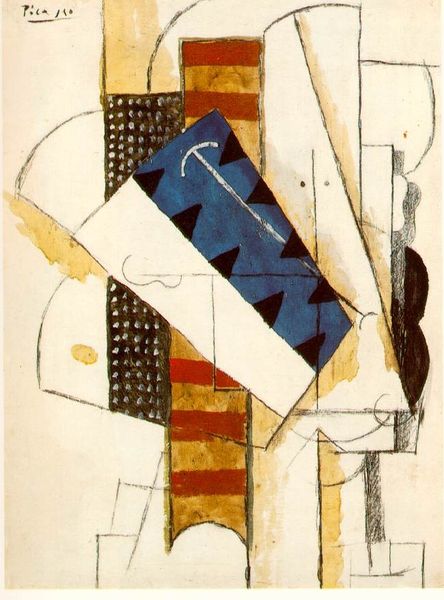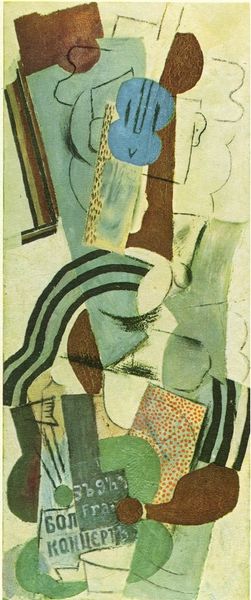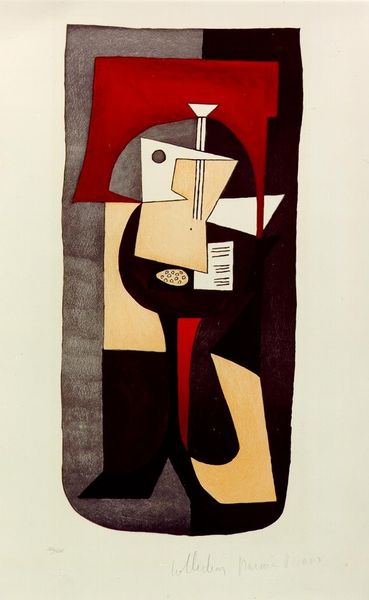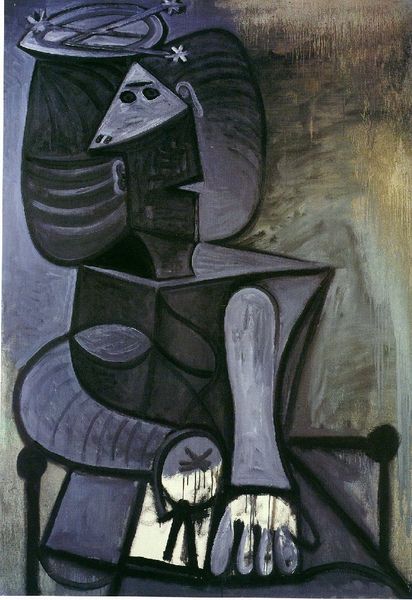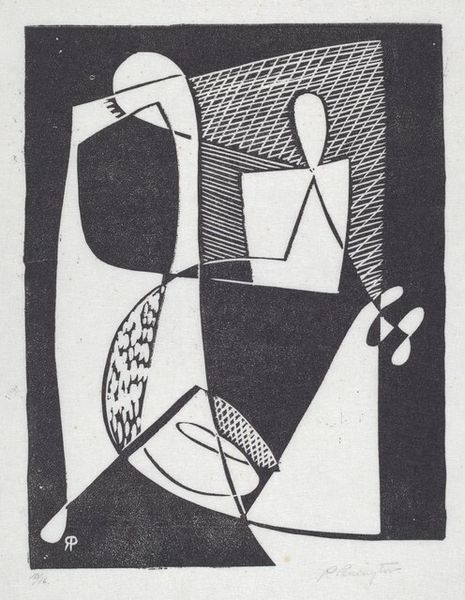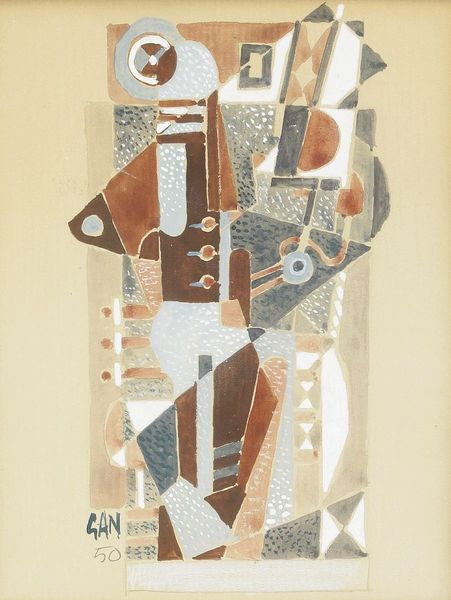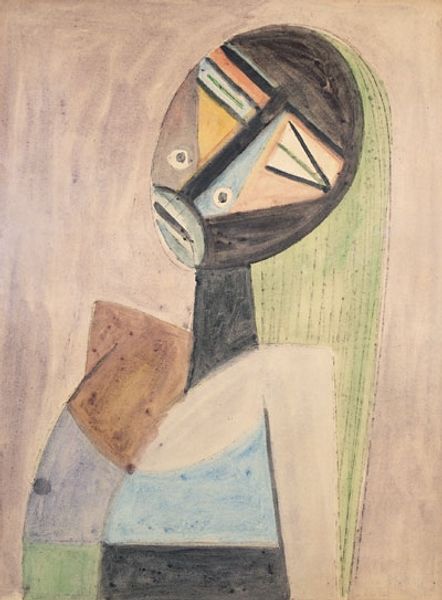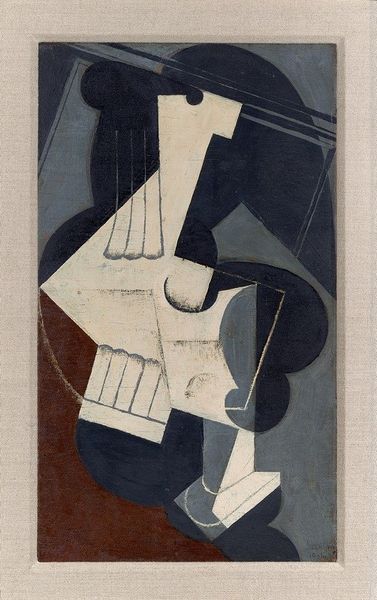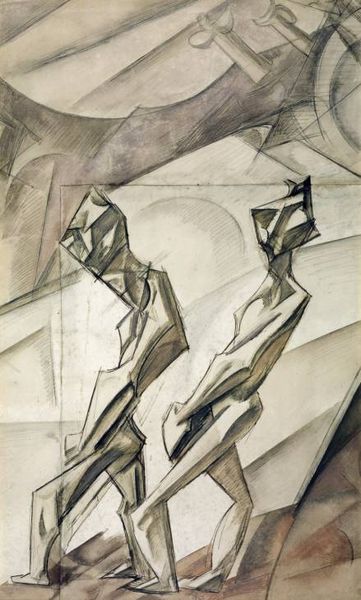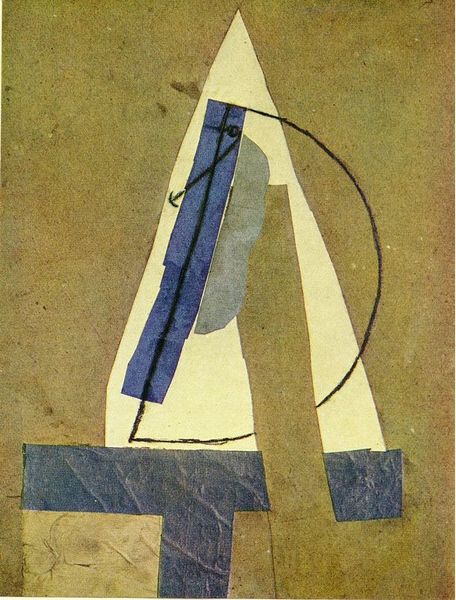
coloured-pencil
#
portrait
#
cubism
#
coloured-pencil
#
figuration
#
coloured pencil
#
abstraction
#
modernism
Dimensions: 100 x 81 cm
Copyright: Pablo Picasso,Fair Use
Curator: Today, we’re looking at an untitled drawing by Pablo Picasso from 1939, rendered in colored pencil. Editor: The fragmented face leaps out, doesn't it? It’s unsettling, almost a deconstruction of portraiture itself. What’s most striking is how those angular shapes simultaneously convey rigidity and vulnerability. Curator: Precisely. The application of cubist principles fractures the figure. Notice the placement of the facial features, reorganized, yet still recognizable. This pushes the boundaries of representation. What strikes you about the medium, the colored pencil? Editor: Well, Picasso’s choice to use such humble materials intrigues me. There’s an immediacy to colored pencil. It lacks the grandeur of oil paints, inviting speculation about access to materials and maybe something deeper about artistic intent. It suggests an intimacy in the creation process, a hands-on manipulation where material limitations guide creative choices. It feels like a democratic form. Curator: Indeed. Consider the historical context of 1939. The looming shadow of war could be seen in these portraits as anxiety of that time began to infuse many artistic disciplines. The limited palette—restricted primarily to grayscale—seems to reflect that era of turbulence and stark realities. The simplification enhances the subject’s emotional tension. Editor: The monochromatic choice might reflect both the economic constraints brought by those pre-war years, as well as stylistic choice as a tool to deliver maximum intensity. Thinking of Picasso, he clearly had access to lots of other materials if he had wanted them, so it's interesting to me to consider a conscious, materially informed, rejection of grandeur. Curator: That’s insightful, it adds another dimension of inquiry here. There's a remarkable formal exploration in this work, but it is equally important to contemplate how materiality plays a role in enhancing its expressive power. Editor: Absolutely. Considering process gives us so much context. The colored pencil marks show the maker's direct touch, blurring that boundary between high art and ordinary labor in such a specific cultural environment. I have a new appreciation after thinking through these elements of its production! Curator: And that tactile experience enriches our understanding, leading to a richer interpretation, for sure.
Comments
No comments
Be the first to comment and join the conversation on the ultimate creative platform.
